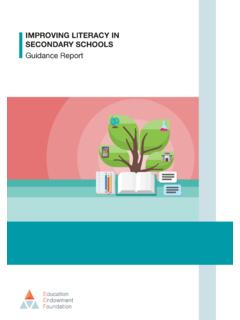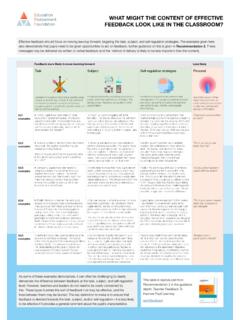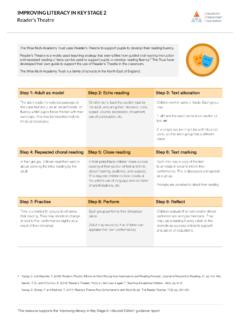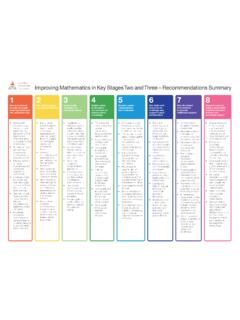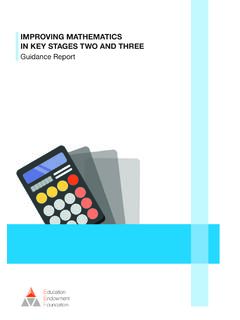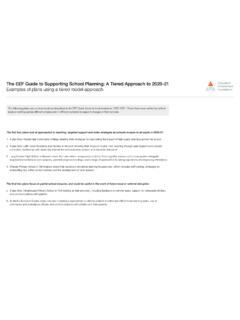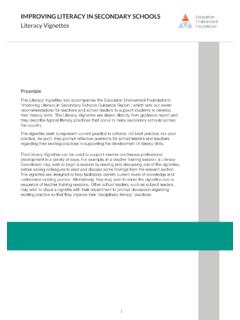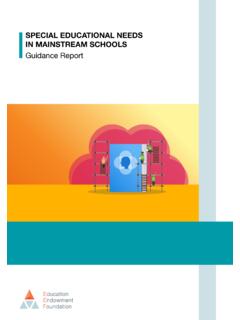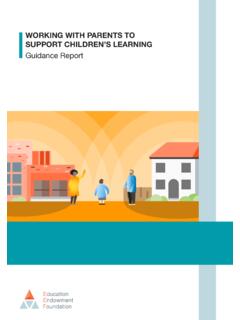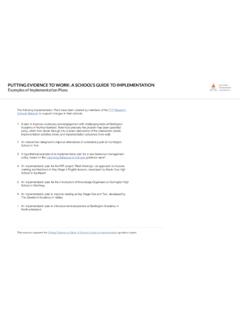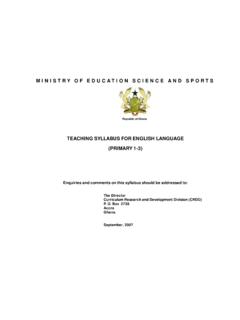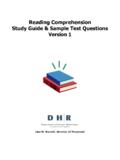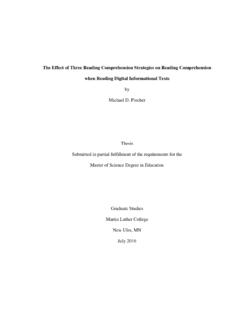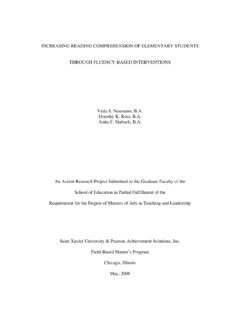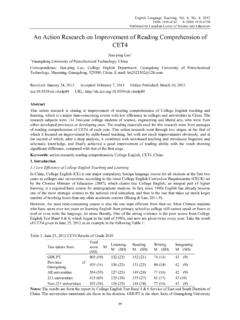Transcription of IMPROVING LITERACY IN SECONDARY SCHOOLS
1 1. Castles, A., Rastle, K., & Nation, K. (2018). Ending the reading Wars: reading Acquisition From Novice to Expert. Psychological Science in the Public Interest, 19(1), 5-51. 2. Nation, K. (2019). Children s reading difficulties, language, and reflections on the simple view of reading . Australian Journal of Learning Difficulties, 24(1), 47-73. Available at: Gough, P. B., & Tunmer, W. E. (1986). Decoding, reading , and reading Disability. Remedial and Special Education, 7(1), 6 10. the complex act of reading is a tricky challenge. Commonly, reading researchers therefore break it down into its component parts, such as reading comprehension , decoding, word reading , fluency, vocabulary, grammar, and ,2A good starting point for understanding reading development is the Simple View of Reading3 (Fig 1.)
2 It highlights that successful reading is a product of two complex, but separable processes: Word reading : the ability to recognise, decode and understand the meaning of individual written words. For example, a pupil with poor word reading may struggle to sound out complex vocabulary in a geography textbook. Language comprehension is a multidimensional process that is used to access the underlying meaning of spoken and written language. This involves the integration of multiple sources of knowledge and skills, including knowledge of word meanings and syntax, and making inferences ( , drawing on background knowledge as we listen and read).
3 For example, a student with poor language comprehension may struggle to comprehend the task stated on a science worksheet. The simple view of reading emphasises how word reading and comprehension should be taken into account when assessing reading , when identifying pupils who need support, for targeting interventions and for monitoring comprehensionWord ReadingGOOD word readingGOOD comprehensionPOOR word readingGOOD comprehensionPOOR word readingPOOR comprehensionGOOD word readingPOOR comprehensionFig LITERACY IN SECONDARY SCHOOLSThe Simple View of Reading2 How can the Simple View of reading be used in the classroom?
4 The Simple View of reading highlights the need for a multifaceted approach to LITERACY teaching. Namely, both word reading and language comprehension need to be developed; however, the emphasis of teaching will shift as reading becomes more secure. Lots of different activities will help to develop children s LITERACY . However, the challenge is to identify the best next steps in learning. This is relevant for all children, but even more important for children who are struggling with their LITERACY in SECONDARY school. They need to catch up so it is important to make the best use of the time available. Doing so helps preserve a broad and balanced curriculum, rather than removing struggling readers from other lessons (see Making Best Use of Teaching Assistants guidance report).
5 One way to identify the best next steps in learning is to use the Simple View of reading to inform the grouping of students for small group work. Both word reading and language comprehension (either spoken or written) should be assessed so that pupils can be placed into one of four quadrants highlighted in Fig. 1. Each group can then receive a different emphasis as the teacher seeks to support their reading and academic development in their subject. Recent research shows that SECONDARY pupils vary widely in their word reading and reading comprehension abilities,4 from reading at lower primary level to reading at adult level.
6 Such large variation may not be easily detected in the SECONDARY classroom where reading individually with pupils is rare. Fig 2. summarises data from this study: word reading and reading comprehension were measured in 210 pupils from Year 7, aged 11-12 years. As Fig 2. shows, most pupils will have average or above word reading and reading comprehension for their age and will benefit from activities that further develop their comprehension skills. However, around 4 or 5 children in an average class of 30 will show below average word reading , these children may benefit from interventions targeted at promoting word reading .
7 Again, approximately 4 or 5 children will show below average reading comprehension and may benefit from reading comprehension interventions. Some of these children will show difficulty with one area and not the other, and others with icketts et al under revisionIMPROVING LITERACY IN SECONDARY SCHOOLSThe Simple View of reading
